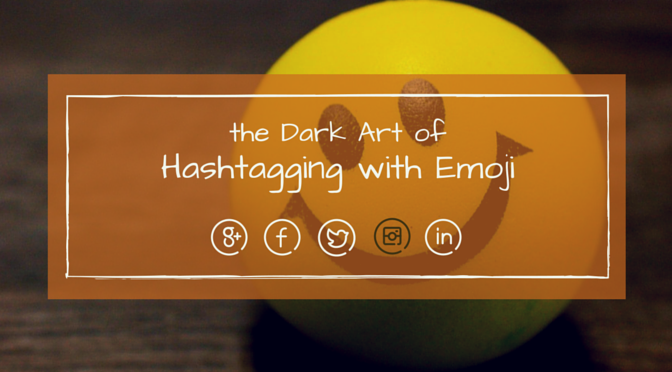
Instagram’s Emoji Hashtag feature is by now pretty firmly established. Introduced in April, the feature lets you tag your content with symbols instead of words, in a nod to the ‘universal visual language’ that emoji have become.
The feature means that, as well as tagging your content, you’ll have the ability to navigate emoji hashtags to locate other content.
Number of posts using emoji hashtags can vary hugely: for non-specific hashtags, like the smiley face, tagged posts can number in the tens of thousands, whereas for more specific and lesser-used tags they can be far fewer.
What are the positives?
The obvious benefit to emoji hashtags is that your content becomes universally discoverable– unlike keywords, emoji symbols are the same in every country on earth, so there are fewer barriers to international discovery.
While international recognition may not be on every business’ agenda, emoji can also be a great way of adding tone and attitude to a post– the expressions can supplement your photo descriptions to clarify tone and avoid the misunderstandings that can crop up when you’re relying on text alone.
Emoji can also infuse your posts with a more informal feel. This is ideal if your business’ Instagram is a glimpse into the day-to-day of your workplace, or if you’re trying to share some behind-the-scenes excitement with your audience.
This may not be for everyone– if your business has decided on a more reserved, formal tone of voice, emoji will clash with that and muddy the waters of your brand voice.
However, when used appropriately, emoji can add more depth to your usual post tags. The enormous range of emoji means that you’re likely to be able to find icons that represent something of your products, services or values.
Using the same emoji repeatedly, as with a brand hashtag, is a good way to reinforce recognition of your brand and what you represent.
What are the negatives?
Some emoji, like the smiley face, have fairly generic meanings. Though great for adding some tone or emotion to a post, if you want your images to be displayed in searches relevant to your products or services, emoji are not the tags to use.
If you tag a post with a smiley face, you’re using a tag with a high volume of posts– but the likelihood of those posts being relevant to your business is small, and it’s even less likely that someone will search for the smiley emoji in the hope of stumbling across related business services.
Different emoji can also have completely unexpected meanings– take the innocent aubergine, which Instagram has banned in hashtag form because of its sexually explicit implications.
More innocent examples include emoji which have slightly different meanings across the world– like the winky face, which is used perfectly innocently and interchangeably with the smiley face across a lot of Europe– but in the UK has a much more suggestive meaning.
Make sure that you double-check the meaning of emoji before you use them– unluckily for any fruit sellers, I recommend steering clear of the peach, too.
Which emoji should I use?
In last month’s guide to hashtagging on Instagram, I talked about the importance of hashtag research.
The same thing is true for emoji as for keywords. Search to see what’s being used in your industry, and how popular those tags are– i.e. whether other people are using and engaging with the tag, or whether it’s only posts from people in the business.
You’re not just limited to one icon– you can string them together to create longer, more emphatic or more visually interesting tags.
This can be a good thing– emoji can be used to tell entertaining, visual stories that will make your content stand out.
Note, though, that the longer and more complicated the tag, the less other people will be using it.
If your tag isn’t in general use, users will be unlikely to search for it– and therefore less likely to discover your content.
The bottom line:
Emoji are not the way to get your content discovered. What they are great at is adding some light-heartedness to posts, or making your text descriptions more visually engaging.
Ultimately, they’re best used as a supplement to keywords, and not a replacement. Tag your posts with relevant terms, and then add emoji for a visual reinforcement.
Will you be trying out emoji hashtags? Let us know!
By Moya Vaughan Evans
Moya is a digital marketing expert, blogging specialist and Social Media Manager at Shake Social. Struggling to maintain your own blog? We can help!


